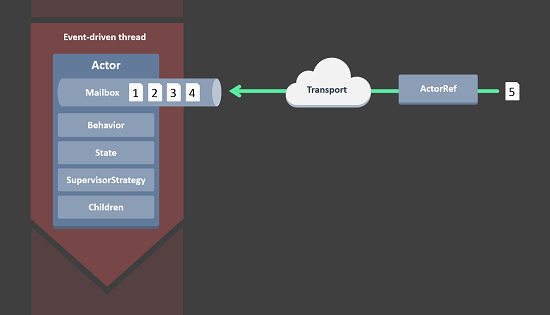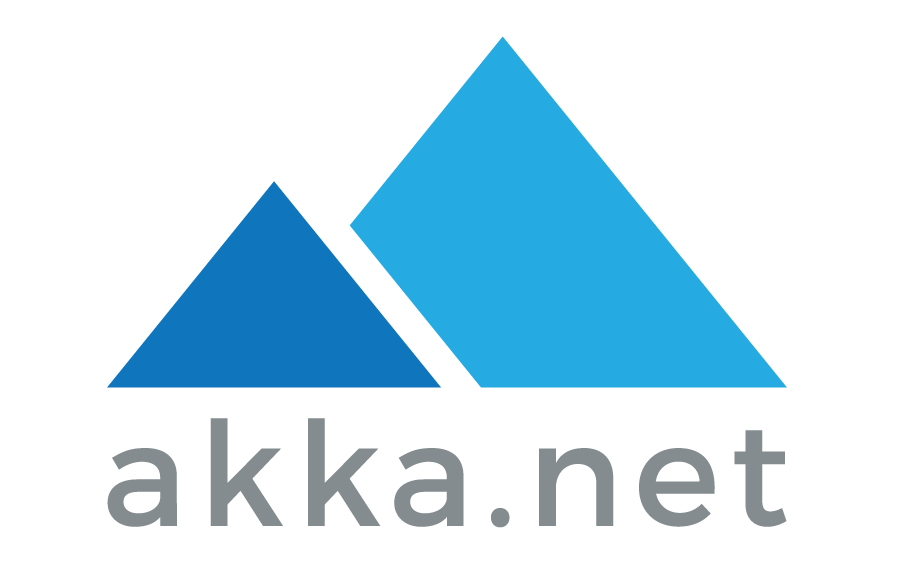Imagine building a real-time messaging application, a lively platform where users exchange messages across the globe, within moments of each other. However, the digital world is fickle, and with its rapid pace comes the challenge of maintaining smooth interactions, ensuring reliability, and creating systems that can withstand unexpected surges.
That's where Akka.NET comes in - an impeccably designed open-source library that serves as a guide for C# developers seeking to navigate the complex waters of distributed systems.
What is Akka.NET?
Akka.NET is meticulously designed to unravel the complexities of distributed systems. This task is accomplished through the ingenious exploitation of the actor model, a powerful paradigm that introduces an intuitive and efficient approach to concurrency management and orchestration for building fault-tolerant applications. In this model, actors function as autonomous computing units, communicating exclusively via messages.
Each actor has a unique address that identifies it within the distributed system. In this way, players can communicate at any time, even with remote players. Each address is made up of several blocks representing its entire hierarchy. So you can quickly identify an actor's parent as well as its children.

Akka.NET enhances robustness through its vigilant supervision and control mechanisms. By implementing this hierarchical structure, in which actors supervise their offspring, the library promotes graceful error handling and recovery strategies. If an actor encounters an anomaly, his or her supervisor can quickly implement corrective actions, enabling your system to overcome difficulties while preserving operational integrity.
This isolation offers a crucial advantage: the state of an actor remains inviolate, protected from the direct influence of others. This property enhances both parallelism and fault tolerance. The transparent implementation of the actor model via Akka.NET allows you to create responsive, scalable systems with remarkable ease.
Whether your ambitions involve creating event-driven applications, building fault-tolerant distributed systems or implementing low-latency solutions with sequential processing, Akka.NET equips you with the arsenal you need to thrive in today's dynamic development sphere.
Key aspects
Akka.NET contains a whole range of functions that gravitate within its ecosystem to meet the various scaling needs of an application.
Akka.Cluster enables the construction of highly available distributed systems, facilitating seamless communication between actors on different nodes. Intriguingly, Akka.Cluster.Sharding extends these benefits by mitigating the challenges of managing a large number of stateful actors. It uses a dispatching strategy that distributes actors across the cluster while maintaining efficient message routing. This distribution technique avoids the need for centralized state management, allowing your application to evolve seamlessly. It can be combined very well with a distributed environment like Kubernetes.
Akka.Remote lets you write code that communicates with local actors while seamlessly extending interactions to remote actors with minimal configuration. This simplifies development and supports scenarios such as real-time financial exchanges between servers. It enables the transparent exchange of messages with actors on remote systems, guaranteeing real-time data updates. It also facilitates the deployment of remote actors, improving scalability and fault tolerance by abstracting network complexities.
Akka.Streams meets the challenges of continuous data consumption and processing. It simplifies stream processing between actors, tackling problems such as buffering, backpressure and message loss. It introduces intuitive and secure ways of efficiently formulating and executing stream processing configurations, while guaranteeing limited resource utilization. Backpressure, an essential feature of Reactive Streams, is inherently integrated, offering seamless interoperability with other implementations.
Akka.Persistence allows stateful actors to retain their internal state, enabling recovery in the event of actor restart, CLR crash, supervisor-driven restart or cluster migration. Unlike saving the current state of an actor, Akka.Persistence only captures changes to the internal state, creating an appended log only. This approach facilitates high transaction rates and efficient replication. During recovery, stored changes are replayed to reconstruct an actor's state. This recovery process can start from the complete change history or from a snapshot, reducing recovery times.
Other very interesting projects include Akka.Management for cluster supervision and management from an HTTP endpoint, Akka.Hosting to simplify application instantiation, and also schedulers, loggers etc...
As with any powerful tool, testing is paramount. Akka.NET also provides comprehensive testing capabilities that enable you to validate the behavior and performance of your actors. With tools like TestKit, you can create unit tests that simulate various scenarios, ensuring your actors function flawlessly in diverse situations. This testing framework empowers you to identify and rectify issues before they impact your production environment.
Summary
In the dynamic realm of distributed systems, where rapid interactions and reliability are paramount, Akka.NET emerges as a vital open-source library. Designed for C# developers, Akka.NET simplifies the complexities of distributed systems using the actor model, a paradigm that manages concurrency and orchestration in fault-tolerant applications. Actors, autonomous computing units, communicate solely through messages, each possessing a unique address within the distributed system.
Akka.NET's hierarchical structure enables vigilant supervision and control, ensuring graceful error handling and recovery. This isolation preserves actor state, enhancing parallelism and fault tolerance. Akka.NET facilitates responsive, scalable systems and suits event-driven applications, fault-tolerant systems, and low-latency solutions.
To go further:

Have a goat day 🐐



Join the conversation.